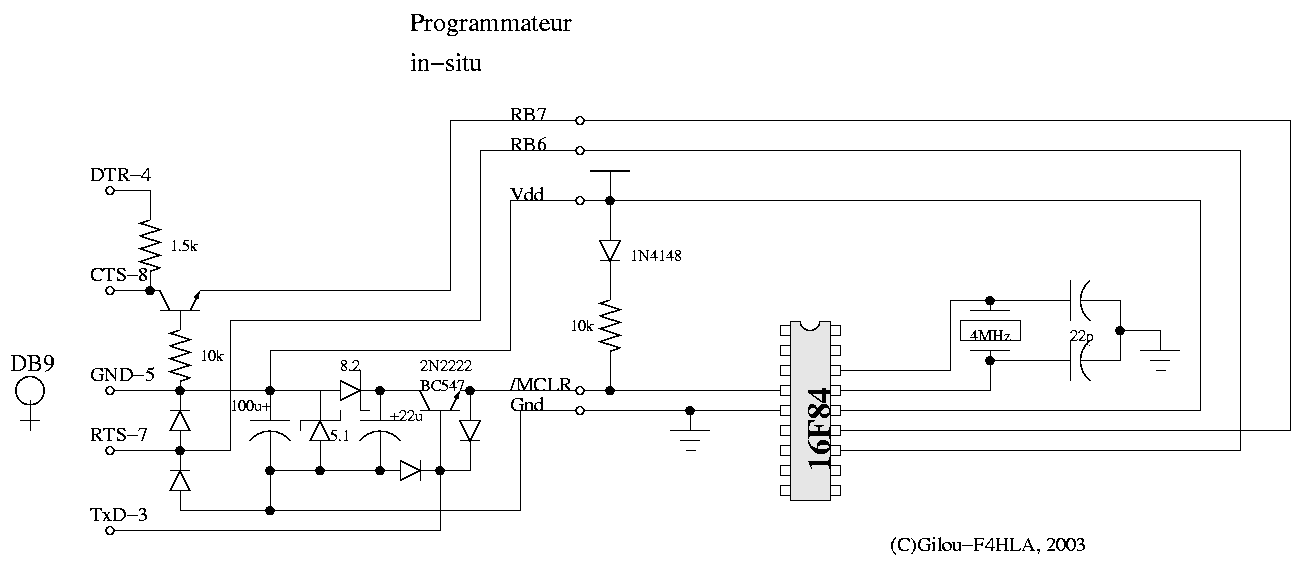|
Stand-alone or in-situ PIC programmer
There are on the internet a lot of PIC programmer schematics, most of them coming from Microchip note. So the reason why I wrote this page is that I need to keep somewhere the schematic of my hardware for both stand-alone or in-situ programmer. Here is the schematic (click for large view) but you need to read informations above. 
Diodes are 1N4148 (or every diode, actually). Zener values are on the schematic. Transistors are general npn (2N2222, BC547...) The schematic is for a JDM compatible programmer. So you should use ICPROG, free software programmer, and everything will goes on. If you use this hardware in stand-alone mode, you do not need any voltage source (even from a laptop). Else, you MUST NOT FORGET to shut it down before programming, and even to plug out voltage source if it comes from sector. This is because, if you look at the schematic, you'll see that serial (DB9) ground (GND) is linked to positive pin (Vdd) of the PIC. We are actually creating a virtual ground that sould never been linked to real ground. If you use this hardware in situ, you must have nothing connected to RB7 and RB6, or at least, it should not be to capacitive. The same way, the diode at the /MCLR pin is importante since it avoid high voltage in the circuit. During normal running, it does not disturb the circuit (what circuit it is), so you must always put it in. Actually, you should use this schematic with all PIC that is programmed in high voltage mode. You have no choice with the 16f84 but you should specifi it with 16f872 or 16f877 (this is NOT the default mode).
Creation date : 09/01/2005 @ 23:26
Last update : 11/01/2005 @ 19:52
Category : Electronic
Page read 9651 times
 Print preview Print preview
 Print the page Print the page
| 




 Curriculum Vitae
Curriculum Vitae Curriculum Vitae
Curriculum Vitae

 visitors
visitors visitors online
visitors online

 Top
Top